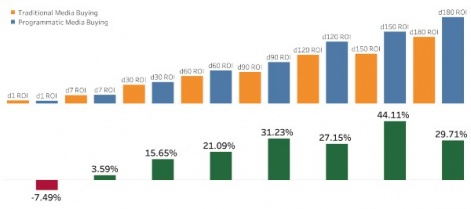Great game design and engaging liveops are important for any game developer who wants to be successful.
But brilliant user acquisition is fundamental for success in the world of free-to-play games.
And that’s why the reveal from US developer N3twork is worthy of attention.
Over the years, it’s been quiet about its operations but the news it recently raised $40 million and is taking over the Tetris licence - including a Tetris battle royale game - has raised its profile significantly.
Aside from games, however, it’s always been very focused on optimising its UA processes, something its director of analytics, marketing and platform Joshua Spertell discusses in a recent blog post.
This details how N3twork has combined an automated ad creative management system (called Brewster) with a programmatic machine learning algorithm (called Markowitz), that’s resulted in 25 per cent higher performance than its traditional media buying operations.

We caught up with Spertell to dig deeper into what N3twork has been up to.
PocketGamer.biz: Given your UA platform was better than traditional media buying by 25%, why are you still using traditional media buying?
Joshua Spertell: Inflections. We think of our UA platform as something that optimizes UA, however, it cannot create inflections because it uses historical data which is a lagging indicator because it’s already happened.
Having the platform allows humans to focus on creating those inflections through new ideas, creative strategies or tactical approaches.
How different are the UA strategies you use between games as I'd imagine your RPG Legendary has a very different audience to Tetris?
Markowitz is channel agnostic and finds the best channels/campaigns/geos based on the game performance.
For example, if Facebook is performing better for Legendary (because of advanced targeting) it will allocate more budget to Facebook vs rewarded video channels.
We are continuously trying to improve our algorithms and their logic so we can improve their performance at a lower scale.Joshua Spertell
Similarly, for Tetris which is significantly more casual, low cost/high scale channels perform better from an ROI standpoint. Markowitz recognizes these patterns and makes recommendations that provide the highest yield for each title.
How active are you at seeking out new advertising channels?
We’re very active in searching out new advertising channels. We keep looking for and testing new channels that we could manage and scale programmatically.
There are some limitations though, as most of the new traffic sources don’t provide a lot of scale (which makes it harder for Markowitz to learn) or don’t allow us to make changes programmatically (which means we couldn’t leverage Brewster).
You talk about "maximizing return by minimizing risk", but how active are you in terms of experimenting in terms of whether increasing risk results in much higher returns?
Very active. A portion of our portfolio is dedicated to testing new creatives and campaigns with a large range of risk profiles.
In what ways are you looking to optimize these tools in future?
We are continuously trying to improve our algorithms and their logic so we can improve their performance at a lower scale. This is the challenge that most programmatic solutions are facing and it’s something that we keep improving as we onboard more games in the system.
We are also continuously moving systems that support & empower our 1st party games (Legendary, Tetris, Funko, etc.) into the N3TWORK Scale Platform to ensure the solutions we build for our games make their way into other developers hands. More on that soon.
You can read N3twork’s article - Institutionalizing Programmatic Media Buying Boosts UA Performance by 25% - here.





















